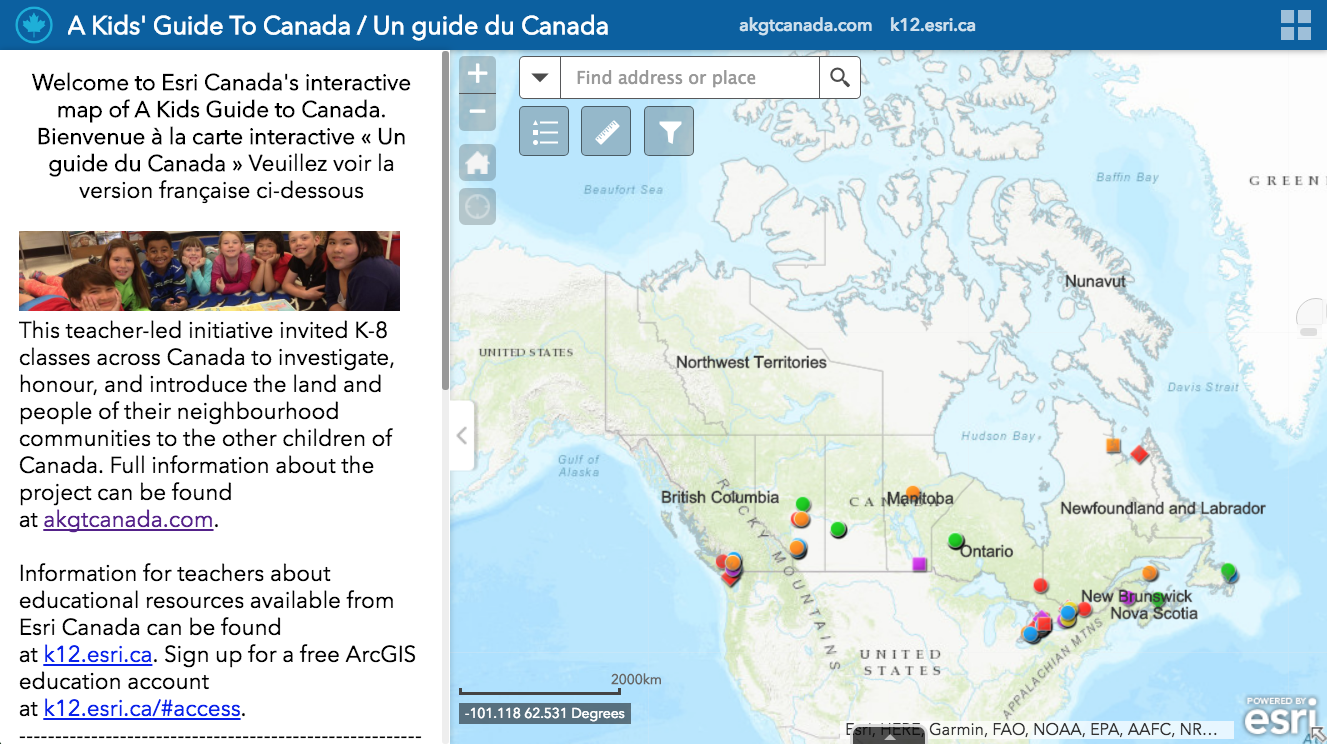This post is also available in: Français (French)
WELCOME TO
A KIDS’ GUIDE TO CANADA
The first guide to Canada written
BY kids and FOR kids!
Click the MAP or click HERE to visit the Kids’ Guide to Canada
Click on the map above to open the Kids’ Guide. Click on one of the coloured buttons to learn about communities from local students who live in that area – from coast to coast to coast!
ONLINE and INTERACTIVE
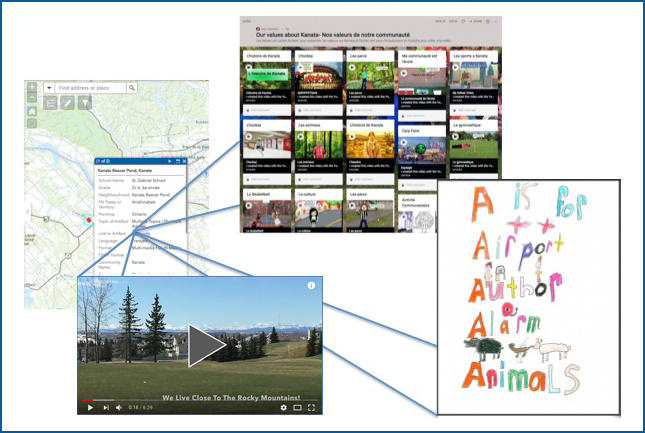
The Kids’ Guide to Canada is a children’s online guide to Canada, containing introductions to the land and people of local neighbourhood communities. It is being created BY CHILDREN and FOR CHILDREN, with student content posted publicly on an interactive map of Canada by their classroom teacher, under a Creative Commons 4.0 license.
Through the Kids’ Guide to Canada, children across Canada and around the world can learn about the many different cultures and communities of Canada from the unique perspectives of children who actually live there, and classes “on the map” can connect for further learning and collaborations.
MULTILINGUAL
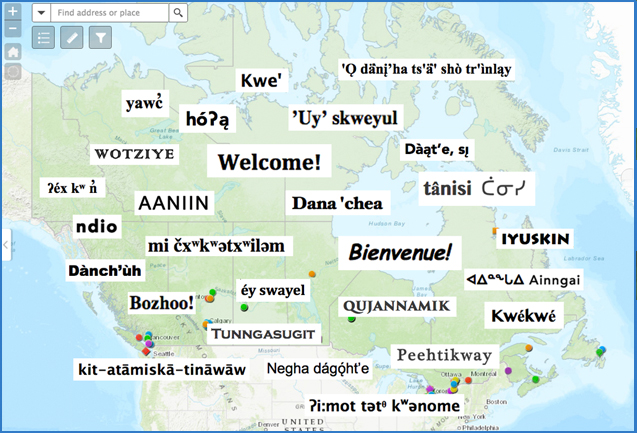
Student content is provided in French, English, and Indigenous languages wherever possible.
AND IT’S COMPLETELY FREE!
This project is a grassroots teacher-led initiative,
organized by elementary teachers from across the country volunteering their time and expertise.
2 ESSENTIAL PARTS for PARTICIPATING CLASSES
PART 1: PREPARATION

A private area on the Kids’ Guide website provides registered teachers with a wide range of resources in both official languages, and in a choice of text, video, and photo formats.
Student preparation resources are also provided, as well as class activities on 3 different themes:
- Digital Safety and Citizenship in a Connected World
- Cross-Cultural Communications
- KidsMatter – I Matter!
PART 2: CONTRIBUTING to the GUIDE
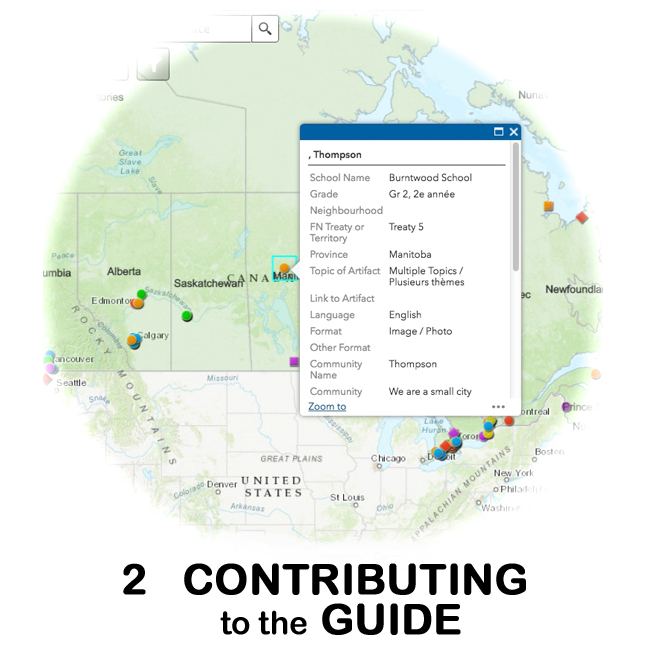
Teachers and their students first investigate their local community, and then create artifacts to introduce the land and people of their area to the children of Canada – and around the world!
Artifacts can take any form – from simple photographs, artwork, poetry, and stories, to complex interviews and multi-media community reports. These are uploaded to the guide by the classroom teacher by filling in a simple form.
For digital safety and security reasons, no student accounts are provided, and individual students can not upload content or contact other classes or students. The project allows for private class-to-class connections which can only be arranged by 2 teachers registered in the project.
TWO OPTIONAL PARTS
PART 3 CLASS-to-CLASS CONNECTIONS

Registered teachers can find and connect with the teachers of classes of interest in private, by using their free account in the Digital Human Library. Here, each teacher’s school contact information is stored on a private, secure, and Canadian server.
Once connected, classroom teachers can arrange for their classes to meet and learn together in the privacy of their respective classrooms, using whatever forms of communication are available to them both.
Ongoing efforts continue to be made to invite and support classes participating from remote areas across the country. However given the small number of elementary classes, and the challenges of communicating from extremely remote communities, opportunities for connections with Arctic classes are very limited at this time. Live national student webcasts from the Arctic, and northern remote communities are provided to help meet the huge interest in learning from these students.
PART 4 SPECIAL ACTIVITIES
Optional special weekly activities are offered each week, to help students share and get to know Canada’s many diverse communities from sea to sea.
These activities include:
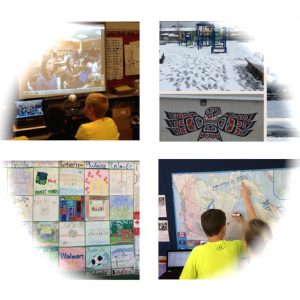
- Photo Challenges
- Class Activities
- Mystery Class (map) Challenges
- Community Activities
- Video and Audio challenges
- Twitter Chats
- and
- exciting Live National Student Webcasts!
If you are a Canadian elementary school teacher interested in having your K-8 students
LEARN, SHARE, or CONNECT
with other classes from coast to coast to coast,
The project has been created with the generous support of a wide range of Canadian educational organizations and small businesses.


